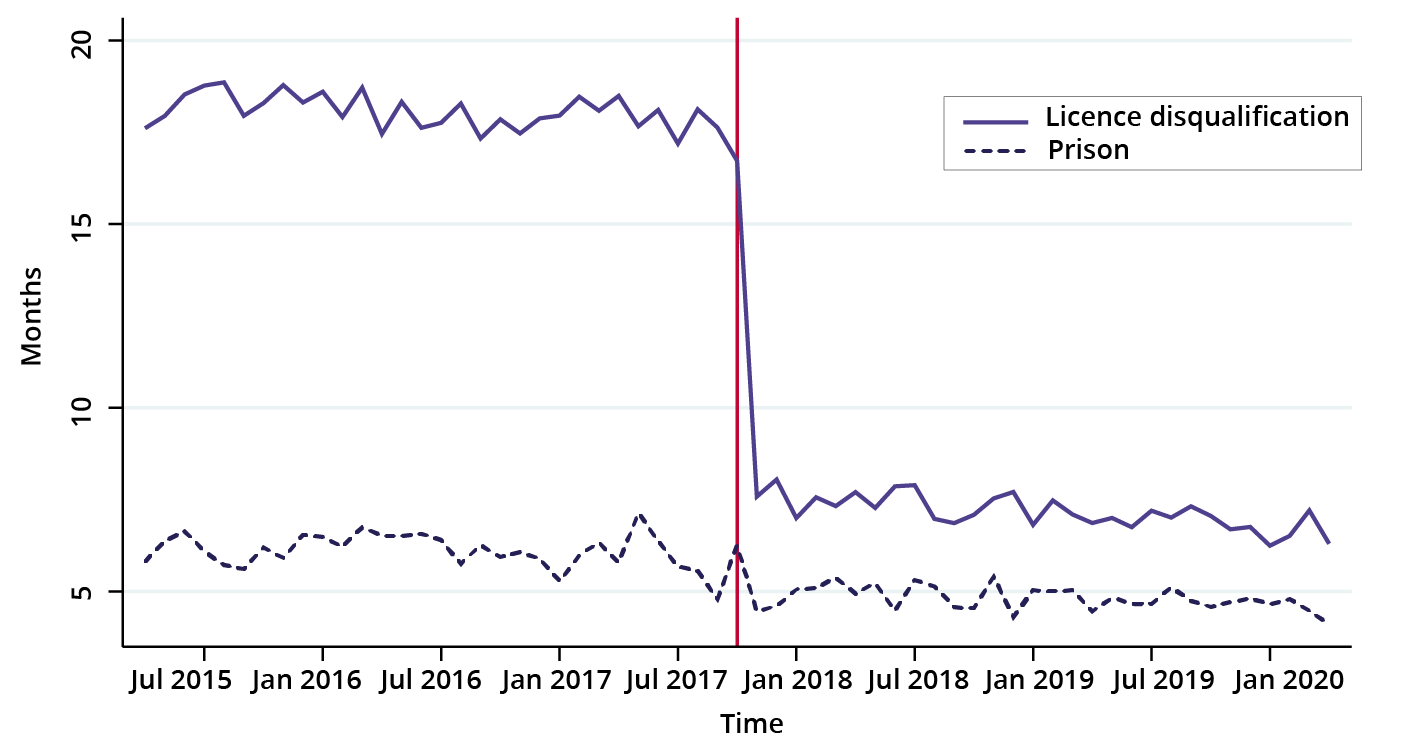Summary
Background
Prior to 2017, penalties for unauthorised driving offences (which include driving while disqualified and driving without a licence) in NSW were considered overly burdensome and disproportionate to the seriousness of the offence. The penalties were also thought to disproportionally impact vulnerable groups including Aboriginal people.
The NSW Driver Licence Disqualification Reforms were introduced in October 2017 to address some of these issues. The reforms included a significant reduction in the statutory penalties for unauthorised driving offences and the introduction of a new incentive scheme which allows drivers to apply to the Local Court to have disqualification periods lifted earlier if they have served an offence-free period. The reforms aimed to reduce reoffending rates by returning more offenders to lawful driving sooner. This would also have the additional benefit of decreasing the number of unauthorised driving matters coming before the courts.
We examined whether the reforms achieved their main aims by comparing outcomes for individuals who committed an unauthorised driving offence with those who exceeded the prescribed content of alcohol (PCA) while driving, before and after the reforms. As PCA offences were unaffected by the reforms, we attribute any difference in outcomes to the reforms.
Key findings
The 2017 Driver Licence Reforms substantially reduced the penalties imposed by the Local Court for unauthorised driving offences. The figure above shows the average length of licence disqualifications and prison sentences for unauthorised driving offences, before and after the reforms were introduced. We estimate that the licence disqualification length and prison sentence length declined by 9.6 months (53%) and 1.7 months (28%), respectively.
The probability of receiving a prison sentence also declined by 1.7 percentage points (37%) following the reforms but there was no change in the probability of receiving a licence disqualification. In most cases the magnitude of the policy effects on sentencing was larger for Aboriginal offenders. For example, the probability of receiving a prison sentence declined by 3.7 p.p. (44%) for Aboriginal offenders with a proven unauthorised driving offence.
The reforms did not reduce the probability of an offender committing a further unauthorised driving offence after their index court appearance or reduce the number of offenders appearing in court for unlawful driving.
Conclusion
The 2017 Driver Licence Reforms, in many cases, halved the penalties imposed for unauthorised driving offences but did not impact court volume or reoffending. These findings are consistent with other research in suggesting that repeat offenders are not responsive to changes in sanctions for driving offences.
